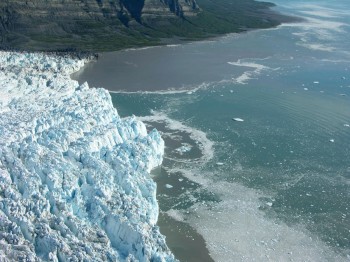A New Method for Tracking Glacial Melt
October 22, 2015

Surface & Hydrologic Processes
Institute for Geophysics (UTIG) researchers have developed a method to track meltwater flowing though seaside glaciers into the ocean, an essential step to understanding the future of the world’s largest glaciers as the climate changes.
The study was led by Timothy Bartholomaus, a postdoctoral fellow at UTIG, and published in the journal Geophysical Research Letters.
Originally, the team went to Greenland and Alaska to study “icequakes,” earthquakes caused when chunks of ice break off glaciers in a process called “calving.” In a serendipitous twist, they discovered that their seismic equipment registered vibrations made by meltwater as it percolated through the glacier.
Previously there had not been a method to track meltwater in glaciers that end at the sea.
Meltwater can destabilize a glacier in a number of ways: The water can speed the glacier’s flow toward the sea; move debris toward the terminus of the glacier; and expedite melting by bringing ocean water into contact with the glacier.
“All of the biggest glaciers in Greenland…in Antarctica, they end in the ocean,” Bartholomaus said. “We need to understand how these glaciers are moving and how they are melting…If we want to answer those questions, we need to know what’s occurring with the meltwater being discharged from the glacier.”
UTIG research associate Jake Walter worked on the study. The team also included researchers from USGS and universities in Alaska.
Back to the Newsletter